ARISTOLOCHIA
Aristolochia
L., Sp.Pl. 2: 960. 1753; Gen. Pl. ed. 5: 410. 1754; Boiss., Fl. Or. 4: 1074. 1879; Bentham & Hook. f., Gen. Pl. 3: 123. 1880; Hook. f., Fl. Brit. India 5: 574. 1887; Fl. China @ eFloras.org 5: 258; Barringer, Fl. North Amer. @ eFloras.org vol. 3; Fl. Pak. @ eFloras.org p.1.
Perennial herbs, subshrubs or shrubs, twining or climbing. Stems woody or herbaceous. Leaves alternate, entire or 3-7-lobed, 3-7-nerved; exstipulate but often with an undeveloped axillary stipule-like leaf (pseudostipule). Flowers axillary, solitary, fasciculate or arranged in racemes; flowers usually a mixture of purple, brown, green or red. Perianth uniseriate (calyx), zygomorphic or actinomorphic, connate to form a tube and limb; tube often enlarged at or near base to form funnelform or cylindric utricle enclosing gynostegium; limb ligulate, discoid or subpeltate, 1-3 lobed. Stamens usually 6, occasionally 5, or their multiples, 1-seriate, fully alternate to the style column to firm gynostegium, filaments absent; dehiscence longitudinal, extrorse. Carpels 6, syncarpous; ovary inferior, 6-locular, 6-angled, gynostegium 3- or 6-lobed. Fruit dry capsules, 6-valved, dehiscing acropetally or basipetally.
540 species
Aristolochia littoralis
Aristolochia littoralis
Parodi, Anales Soc. Ci. Argent. 5: 155. 1878; A. elegans Masters, Gard. Chron. 24,2: 301. 1885; Bor & Raizada, Some beautiful Ind. Climb. Shrubs 26. 1954; Fl. Pak. @ eFloras.org p. 3.
A slender perennial twiner with pendulous branches and foliage; stem woody. Leaves alternate, 5-10 cm x 5-9 cm; leaf blade broadly ovate-cordate, apex +/- acute, margin entire, base cordate, both surfaces glabrous, upper surface dark, lower pale green, 5 (-7)-palmately veined; petiole 3-6 cm long; true stipule absent; pseudostipules (undeveloped axillary stipule-like leaf) 3-3.5 cm x 2.5-2.8 cm, +/- orbicular with cordate base, foliaceous, palmately veined; occasionally two pseudostipules present. Flowers solitary axillary, bisexual, zygomorphic. Pedicels 9-10 cm long, glabrous. Perianth zygomorphic, uniseriate (calyx), with 1 petaloid whorl, connate into distinct tube, tube curved, enlarged near base to form an utricle, 6 cm x 3.5 cm, apically cylindric, curved, basally funnelform, tube lined with downwardly pointed hairs; limb ligulate, heart-shaped; ligule large, up to 18.5 cm x 17 cm (with an opening 3.5 cm x 2 cm, lined with hairs), leathery, dark purplish brown with white markings forming reticulum. Stamens 6; filaments absent; anthers adnate to styles and stigmas forming a column, bithecous, ca. 1 cm long, dehiscing longitudinally, extrorse. Carpels 6, ovary inferior, 6-locular, ovules many on axile placentas. Fruit dry septicidal capsule, brown, oblong, 6-ridged and furrowed, beaked, beak ca. 5 mm long, dehiscing basally through 6 valves; pedicel also splitting longitudinally along with capsule wall. Seeds thin, compressed, ovate, 6-7 mm x 3-4 mm, acuminate, ridged, brownish.
Common Names: Calico Flower, Elegant Dutchman’s Pipe
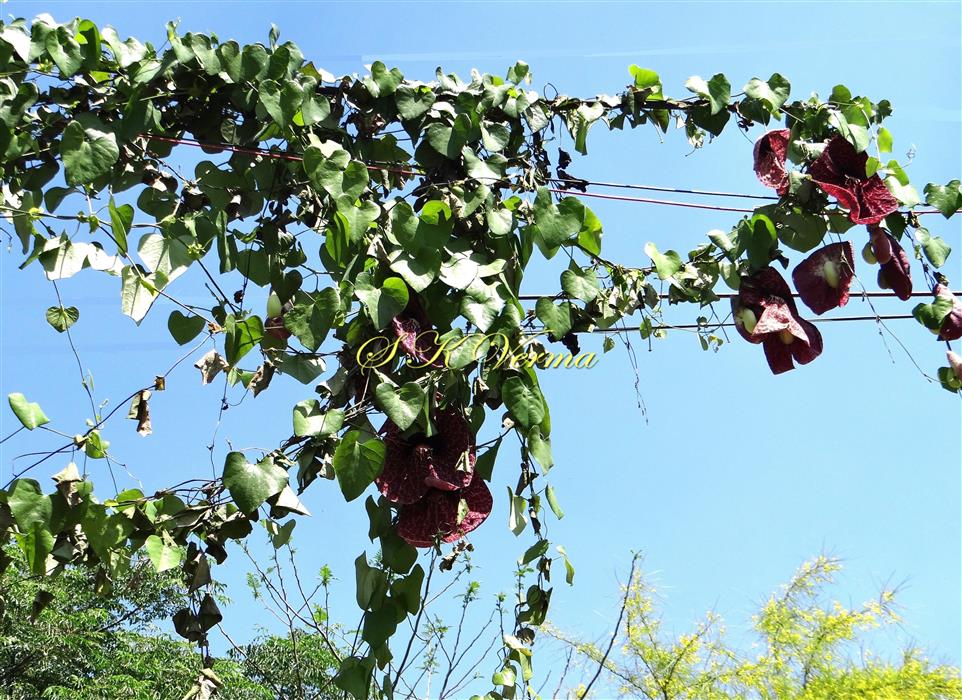
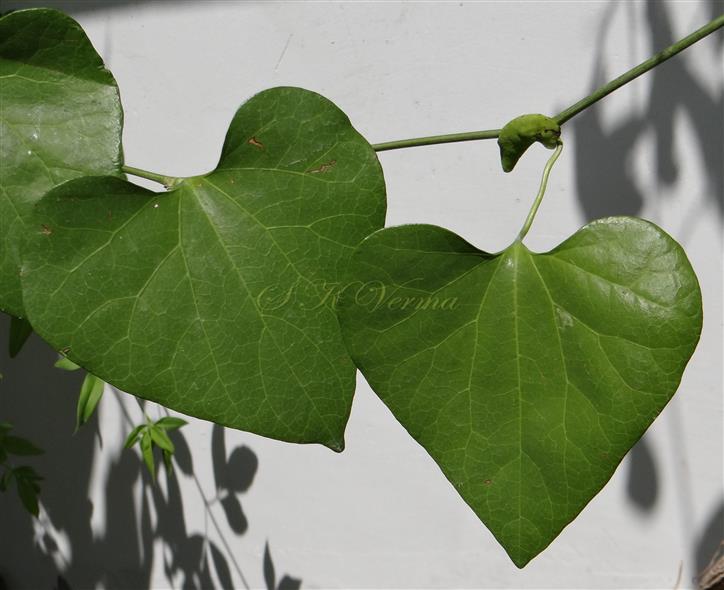
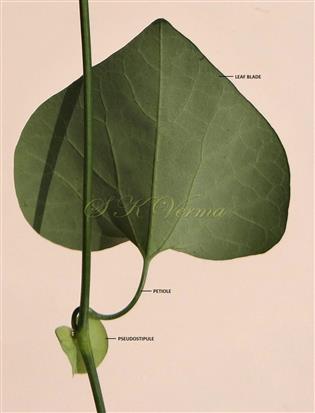
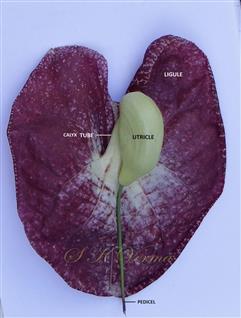
 of calyx-DSC08734.jpg)
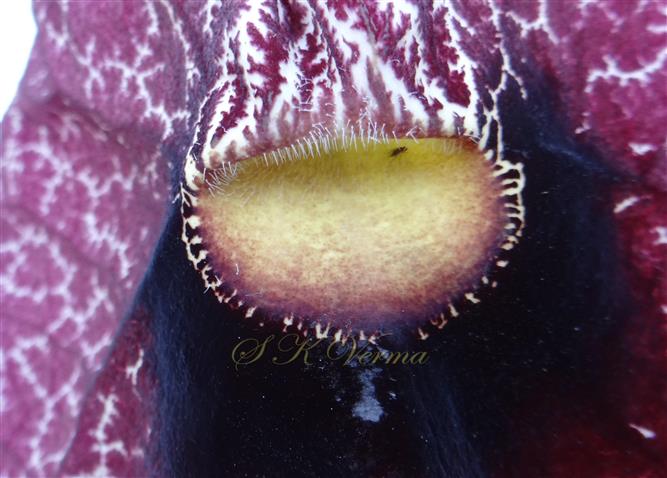
.jpg)
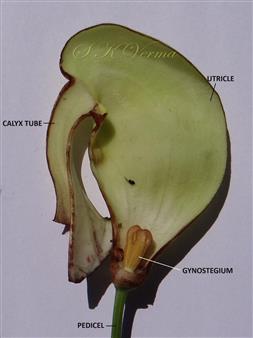
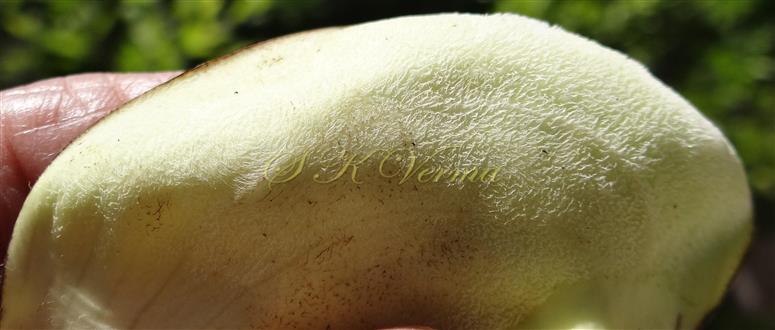
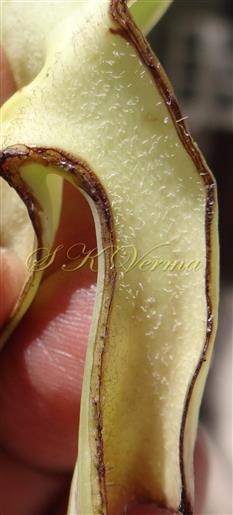
-DSC08764.jpg)
-DSC08770.jpg)

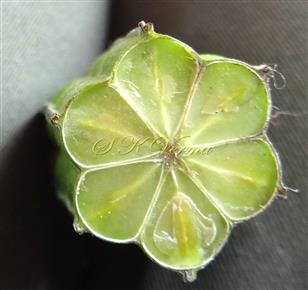
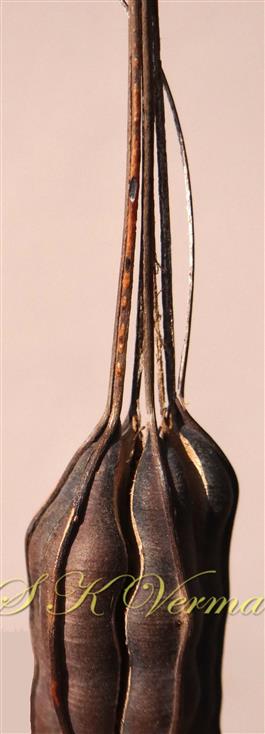
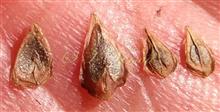





 of calyx-DSC08734.jpg)

.jpg)



-DSC08764.jpg)
-DSC08770.jpg)



